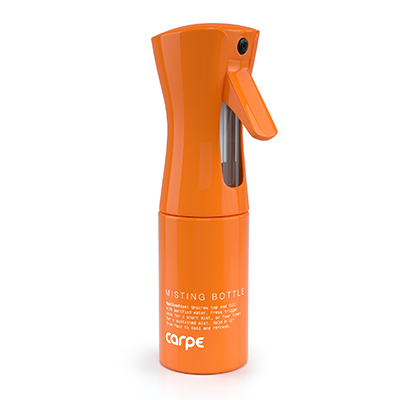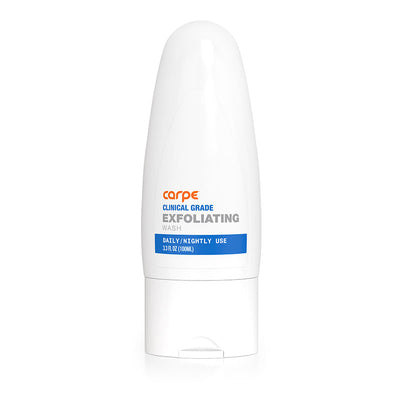Excessive sweating of the face, head, and neck is medically known as cranio facial hyperhidrosis.
This type of sweating is most often a symptom of a skin condition called primary focal hyperhidrosis that causes people to sweat excessively from specific areas of their body for no apparent reason.
TREATMENTS
There are several treatments you can explore which range from minimally invasive methods to very invasive treatments like surgery.
Here is a breakdown of the treatments that are currently available:
Antiperspirants are safe to use on the face, head, and neck, but it is always wise to speak with a doctor before trying a new product.
Botox is approved by the FDA for the treatment of axillary hyperhidrosis, but it can also be used to reduce sweating on other areas of the body, like the face.
However, you need to be careful when selecting a doctor as the injections can be difficult to administer and require specific knowledge. There can be side effects, like mild facial paralysis, associated with treatment.The risks associated with Botox injections are much lower if it is administered by an experienced doctor.[1]
There are some oral medications for hyperhidrosis that can be helpful in the treatment of head and neck sweating.
Oral medication is often helpful when used in combination with other therapies, but some find them effective on its own.
Typically, a type of medication called an anticholinergic, like glycopyrrolate or oxybutynin, is used to treat hyperhidrosis.
Sometimes, less frequently, doctors may use beta blockers, clonidine, or benzodiazepines (anxiety medication) to treat the symptoms of hyperhidrosis. If your hyperhidrosis is exacerbated by chronic anxiety or depression your doctor may also choose to try an antidepressant medication.[1]
There is a type of surgical treatment for primary focal hyperhidrosis,Endoscopic thoracic sympathectomy (ETS). ETS should not be considered unless sweating is severe and greatly impacts a patient’s quality of life. It is usually used to treat palmar hyperhidrosis but it can also improve sweating of the head and neck.
When performing ETS, a surgeon will cut or disrupt nerves that cause the head, neck, and hands to sweat in order to reduce the symptoms of hyperhidrosis.
Unfortunately, a complication of ETS surgery called compensatory sweating may occur, in which sweating begins to happen on the trunk of the body rather than the areas that were treated by the surgery.
Compensatory sweating is a common side effect and should be taken into consideration when someone is contemplating surgery.[1]
SECONDARY GENERALIZED HYPERHIDROSIS
Facial sweat can also be caused by secondary generalized hyperhidrosis, a different type of hyperhidrosis that has a known underlying cause ie a medical condition.
Secondary generalized hyperhidrosis begins suddenly during adulthood and it has a definitive cause.
If your doctor suspects that your symptoms are caused by secondary hyperhidrosis, then your course of treatment will be significantly different.
If you experience all over body sweating and increased sweating at night in addition to excessive head and neck sweating then you are more likely to be suffering from secondary generalized hyperhidrosis and should be treated by a doctor.
Try not to worry, but do seek medical attention if you have other new symptoms in addition to craniofacial sweating.[1]
Treatments:
In order to treat secondary hyperhidrosis doctors simply need to find the factor that is causing it and fix it. Once the causative agent is removed people stop experiencing the symptoms of hyperhidrosis.
Most of the time secondary hyperhidrosis is caused by certain common medicines.
If this is the case, the person just needs to stop taking the medication that’s causing the issue.
Other times, secondary hyperhidrosis is caused by a physiological condition or disease. Treating the underlying medical issue will clear up secondary hyperhidrosis.[2]
Sometimes, a serious infection or cancer is responsible for excessive sweating.
Other conditions and diseases that can cause secondary hyperhidrosis include:
- heart disease
- diabetes
- menopause
- stroke
- spinal cord injury
- and several others.[2]
However, diseases that cause secondary hyperhidrosis usually affect a larger area of the body rather than just the head and neck.
CHANGE YOUR LIFESTYLE
Whether you have excessive head and neck sweating caused by primary focal hyperhidrosis or secondary hyperhidrosis, there are certain factors that will make your symptoms worse.
AVOID:
- Weather conditions like high humidity and high heat.
- spicy food
- alcohol
- caffeine
- emotional triggers like stress, anxiety, anger, or fear.[2]
In addition to avoiding triggers, you can make some basic lifestyle changes that can help reduce and manage sweating in general.
HABITS TO ADOPT:
- Apply antiperspirants at night
- Stay well hydrated
- Eat small spaced out meals to aid in digestion
- Limit exercise before social encounters or work
- Clean the skin on you head and neck frequently to keep it healthy and to avoid build up that can lead to breakouts
Excessive head and neck sweating can be devastating, but seeking out treatment can dramatically improve symptoms and lead huge improvements. Don’t be afraid to seek out treatment and advocate for your needs!
Sources
- Pariser, D. M. (2014). Hyperhidrosis (4th ed., Vol. 32). Philadelphia, PA: Elsevier.
- Dix, M. (2018, October 31). How to Curb Excessive Head and Face Sweat. Retrieved April 25, 2019, from https://www.healthline.com/health/how-to-stop-sweating-face






16790753702383.jpg?v=1679075372)

16790746985853.jpg?v=1679074700)


16790757289763.jpg?v=1679075731)









